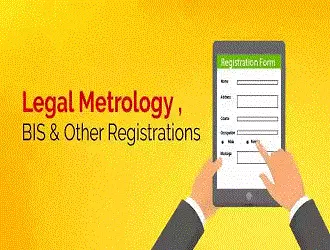The journey of ASC Group began in the year 1995 with the establishment of ‘Alok Sinhal & Co.’ a Chartered Accountant firm founded by Mr. Alok Kumar Agarwal, who is presently the CEO of the ASC Group, and Managing Partner of the Chartered Accountant Firm. Within the short span of 25 years, we have become one of the few organizations in India which provide complete business services to our clients, on a range of matters.
The Group carries with it an experience of more than 25 years in advising many Indian business houses and Fortune 500 multinationals operating in India on a wide range of matters including company formation, business re-organization, cross-border taxation advisory, taxation advisory, foreign trade policy, foreign direct investment, tax litigation support, FEMA advisory, GST consultancy, legal metrology, bureau of Indian standard, internal audit, transaction support services, custom related services, insolvency, and bankruptcy advisory and other regulatory policy matters, across a range of industry sectors.
About UsNeed more information on any of our services?
Alok Kumar Agarwal is the Founder and CEO of ASC Group. With an experience of over 25 years, he is an eminent name in the Finance and Tax..
A qualified Insolvency Professional, Masters in Economics and PGDM in Marketing, Ms. Anju Agarwal is an investment expert and an experienced strate..
Deepak Kumar Dass (Advocate) is an integral part of ASC Group and heads the Indirect Taxation vertical at ASC. He is a lawyer and me..
Shailendra Kumar Mishra is a chartered accountant by profession and has been associated with ASC since 2010. An indispensable member of the team, S..
Our engagement with ASC Group is for more than 5 years, and they are not just a tax consultant. ASC is a business partner and a strategic advisor. The firm has helped us grow and manage the complex tax matters of today and has helped in planning for the future as well. Grateful for the services and professionalism offered.
ASC team has been of great support in handling all my requests for tax-related information, especially as this domain is very wide and complex. Moreover their book All India Taxes is resourceful and comprehensive.
We have been associated with ASC for more than 2 years for ensuring compliance as per the Legal Metrology Act, 2009. We have found their services to be extremely professional & trustworthy. ASC team has depth knowledge of Legal Metrology rules & regulations and has the ability to provide solutions to any kind of complex legal requirement. We appreciate our association and hope to continue in the future.”
We would really like to express our gratitude towards the guidance given by you. Your dedication towards the work really proved your establishment in this field. I would surely recommend you to my partner companies for the work you provide us. Your team had really proved to be useful in terms of knowledge and assistance given to us. We hope to have a fruitful relationship in the future as well.
We have newly set-up our office in India and ASC Group is our advisor for registrations, bookkeeping and doing all compliances. We would like to thank the Japandesk of ASC Group and their team who are providing their prompt support and professional guidance to us. We shall look forward to having our association for a longer period.
“We are very happy with the services ASC has been providing us which include transfer pricing, international taxation, payroll, etc. They are knowledgeable and professional teams.
“ASC is like an extended office for Avery Dennison for the matters related to Taxation. Be it Excise, Service tax or VAT, with the approach ASC handles everything I do not worry about them and I know that I am in safe hands.”
I want to thank ASC Consulting & the whole team for the successful project completion. We really liked your daily updates and follow-ups in your work and the amount of time and dedication to making the work happening round the clock to achieve the desired goals in the committed deadlines. We really hope you continue to help us in our future endeavors and keep up the dedication in future projects as well.
It’s being more than one year since we partner ASC as Blackberry’s consultant for IDT matters, ASC and team has supported very well throughout this journey. We have been very well guided for Monthly returns compliances, timely advisory and opinions. I would recommend your services for every prospective partner.
“ASC team has been of great support in handling our manpower requirement. We are happy with their promptness, service quality, and professionalism being demonstrated. They will be an ideal employee management service provider to any Corporate.”
Proper Guidance from ASC Insolvency Services LLP in bringing my company out of Insolvency. Last year my company was admitted into Insolvency by NCLT on the application of one of my operational creditor. Mr. Alok Kumar Agarwal guided me to arrive at the settlement with the creditor in NCLT.I will remain thankful to ASC and wish they continue rendering professional services to their clients.
Excellent service rendered by ASC Insolvency Services LLP. I am pleased to inform that with their in depth analysis on causes for which a company has tended to be insolvent and the possibility of its resolution/revival ASC Insolvency Services LLP have been giving the proper guidance. I feel confident taking decisions on the strength of opinions or advices given by the ASC Insolvency Services LLP.
We are using ASC services on various matters like secretarial filings, litigation, legal advisory services etc. and we are quite happy with their professional approach, guidance and support. We shall look forward to work with them on many other engagements in near future.
We are taking several services from ASC Group like internal audit, export incentive defined under Foreign Trade Policy etc. We are happy with their prompt support, approach and guidance to our Company on time-to-time basis. We shall look forward to receive their continued support to safeguard the interest of our Indian entity.
Have dealt with many consulting firms before who are giving advices while never actually trying it themselves. Advantage with ASC is that they never talk about things that they THINK will work. They only talk about things they have tried, so they KNOW it works.
We have been working with the ASC Group for all our accounting and compliance needs for a few years now. ASC’s team also supported us last year during our merger with a global healthcare company. I am grateful for having chosen ASC as the advisors and would highly recommend them to companies and any startup looking for a one-stop partner for their business.
We are associated with ASC since August 2021 for our end-to-end Accounts, Tax & GST compliance matters. They are extremely capable and have been handling each & every critical situation professionally. The team deployed for our entity has a positive & impressive attitude towards work. It is my pleasure for choosing ASC as a consultant and would highly recommend them to companies financial advisory services.










































































